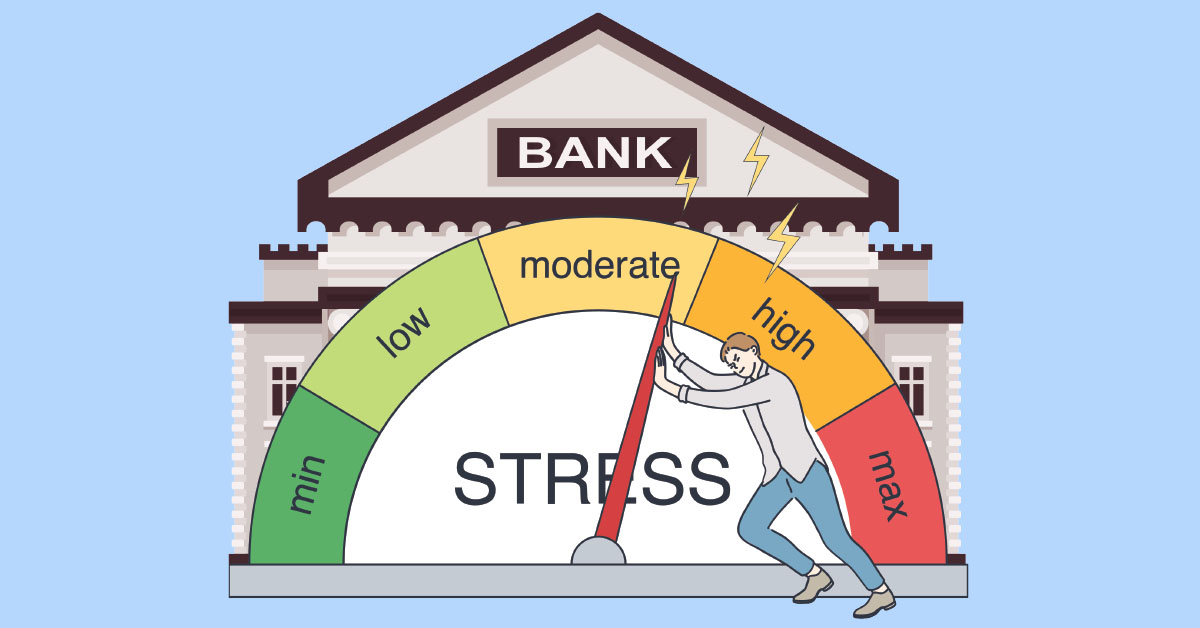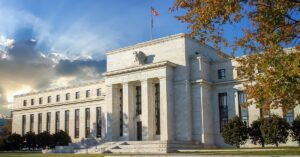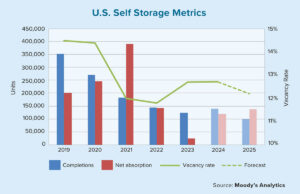Last year, the Federal Reserve released its newest stress-test results that include 34 of the nation’s largest financial institutions. Each year, the Fed creates a financial scenario to assess whether banks have the proper amount of capital and other safeguards to survive an economic shock. The Fed’s stress tests were established in the wake of the Great Recession and began in 2011 to ensure that the U.S. banking system could withstand major economic downturns.
While the most recent test didn’t create much fanfare, it did offer some surprising insights involving commercial real estate. The test’s “severely adverse scenario” was characterized by a major global recession accompanied by a period of heightened stress in commercial real estate and corporate debt markets. Under this scenario, the downturn is deepened due to remote work, leading to declines in commercial real estate prices. In turn, this reduces corporate earnings and sours investor attitudes. Foreign economies suffer from various hardships, including escalating risks in the Chinese economy. And these pressures wind up causing commercial property prices to drop by 40% from the end of 2021 to the end of 2023.
If the Fed says your portfolio is riskier than others, we would like to find out why.
– John Mackerey, senior vice president, DBRS Morningstar
In short, the stress-test scenario involved a perfect storm of inflation, high interest rates, rising unemployment, supply chain troubles and international turbulence. This version of the test was the equivalent of throwing everything plus the kitchen sink at banks to see how they would perform. Although such a scenario would be quite extreme, it isn’t completely outside the realm of possibility if there were to be an actual global recession, which many economists, pundits and former government officials have been warning about for months.
Despite the doom and gloom that surrounds the financial-services sector these days, the Fed’s final report card was mostly good, with all 34 banks in the scenario having enough cash on hand to withstand the slings and arrows of a major global recession and a combined $612 billion in losses. But there were some potential risks discovered in a few sectors, including commercial real estate, which fared worse on the test than many other types of investments.
Credit-ratings agency DBRS Morningstar found that, under this extreme stress-test scenario, commercial real estate losses were second only to credit cards. The report also showed that across the nation’s publicly traded banks, average losses would represent 10.7% of their commercial mortgage portfolios compared to only 6.5% of their total portfolios. This shows that commercial real estate remains more vulnerable in a downturn.
“With commercial real estate losses being second to only credit cards, which are unsecured, that highlights the potential risk for the sector in a severe economic scenario that the Federal Reserve has created,” says John Mackerey, a DBRS Morningstar senior vice president.
A Federal Reserve press release explains that even in a serious recession, the banks’ aggregate common equity capital ratio — which provides a cushion against losses — is expected to decline by 270 basis to a minimum of 9.7%. This is still more than double the minimum requirement of 4.5%. Aggregate losses were mainly driven by some $450 billion in loan losses, along with $100 billion in trading and counterparty losses. This shows that the losses were primarily driven by loan defaults.
Under the Fed’s scenario, Morgan Stanley would face the highest losses at 21% of its commercial mortgage holdings, followed by Goldman Sachs at 19.7% and HSBC at 16.1%. Mackerey says it requires more information to know exactly why these institutions stood out in the test. And he cautions that the stress-test parameters were created by the Fed, so there are a lot of unknown details.
Still, he says, it’s probably an accurate description for the test results to infer that commercial real estate has the potential for greater losses in a downturn than other asset classes. He believes that these findings are worth noting, but he’s not overly concerned.
“Our conclusion was essentially that the losses were absorbable by the banks, so that is positive,” Mackerey says. “Bank exposure to commercial real estate is different than it was during the financial crisis (of 2007 to 2009). Generally, there is less of it, and what they are financing tends to be a better mixture and greater diversity. So, we don’t view these numbers as alarming.”
While such tests might seem like esoteric activities, they do have a purpose. They help to assure that banks are in good shape. They also offer some insights — even if limited — into how each financial institution is faring along with some sense of their strategies. Mackerey says the stress-test results also may generate conversations with banks to find the reasons for these estimated losses.
“When you look at the average for the banks and someone is an outlier, such as Morgan Stanley, we try to understand what the Fed saw in their portfolio and see how they can explain the Fed’s results,” Mackerey says. “If the Fed says your portfolio is riskier than others, we would like to find out why.
“And they may be able to explain the issue easily. It may be that the Fed isn’t giving them credit for various characteristics in their portfolio. Some of these banks may also have relatively small commercial real estate portfolios. So, the losses seem outsized. It may be something simple. You just don’t know.” ●







